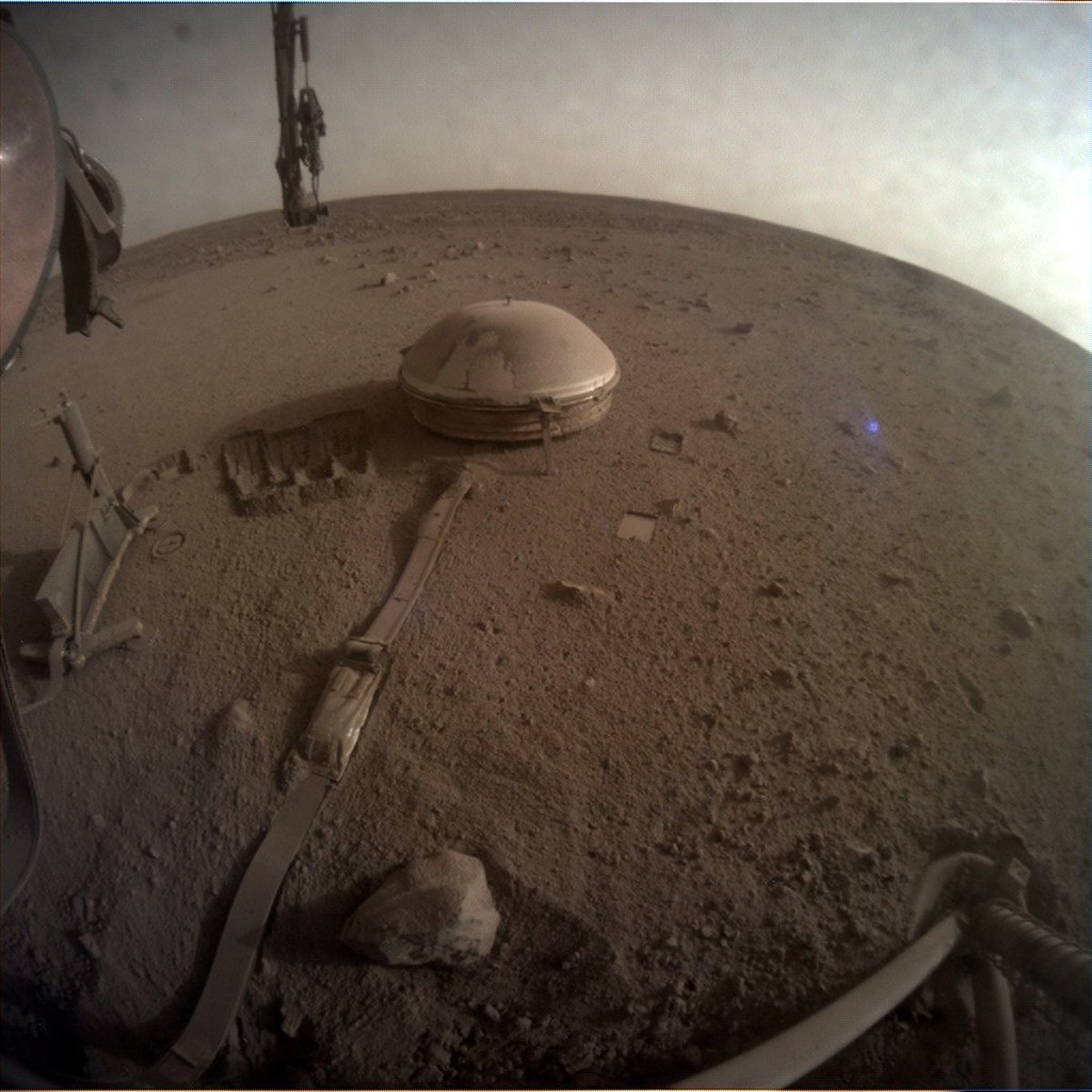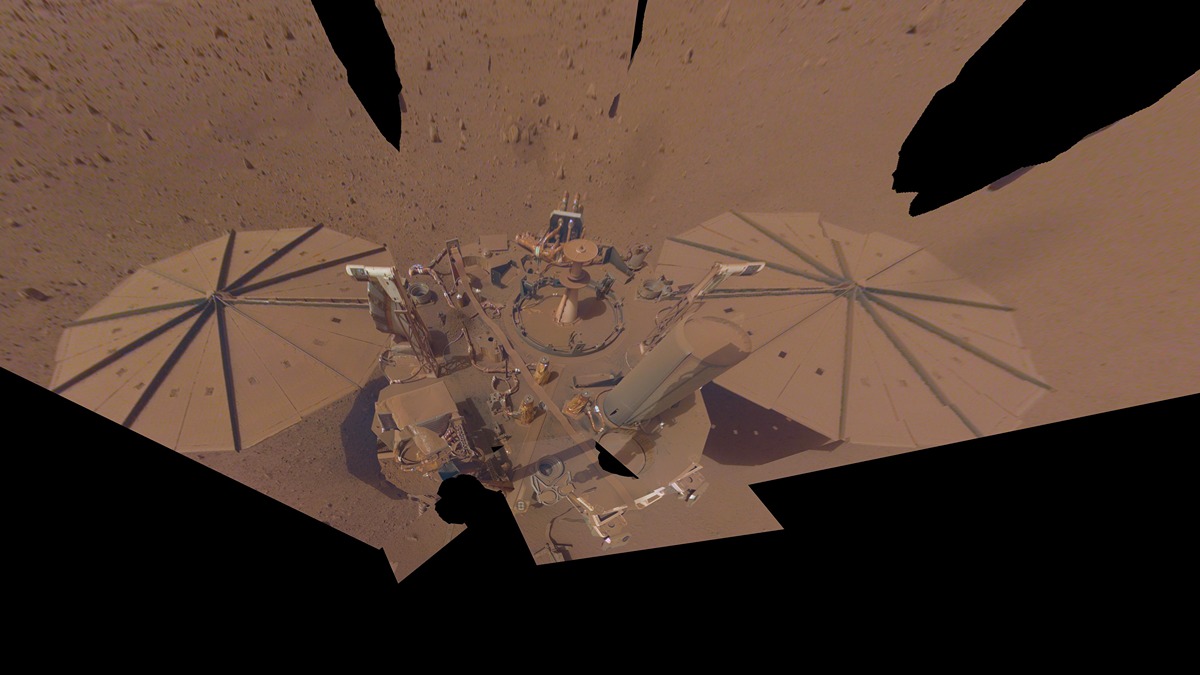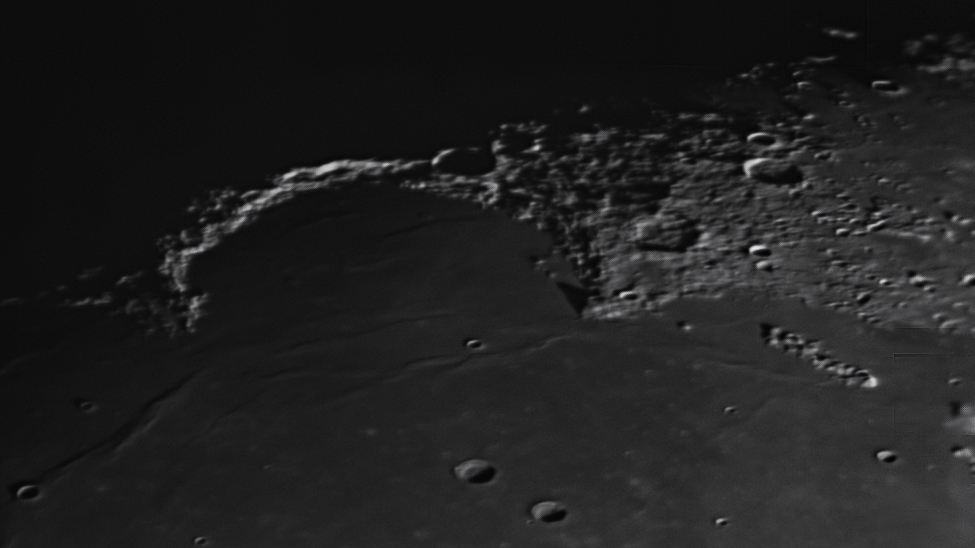This may be the last Mars photo from NASA's InSight lander before it dies on the Red Planet
"My power's really low, so this may be the last image I can send," InSight's latest report reads.

By now, it's a familiar view of Mars: A distant horizon strewn with rocks while, up close, a domed seismometer, a robotic arm and other instruments sit covered in red dust. But this photo from NASA's InSight Mars lander just might be its last.
"My power's really low, so this may be the last image I can send," NASA wrote as the InSight lander while sharing the image on Twitter Monday (Dec. 19). "Don't worry about me, though: my time here has been both productive and serene."
In a blog post on Dec. 19, NASA announced that InSight failed to respond to communications from Earth and it's assumed the Mars lander may have reached the end of its operations.
For months the lander has been starved of power as its solar arrays get increasingly caked with Martian dust.
Related: NASA's InSight Mars lander: 10 surprising facts

NASA launched the Mars lander InSight (its name is short for Interior Exploration using Seismic Investigations, Geodesy and Heat Transport) in May 2018, with the lander touching down on Mars in the plains of the Elysium Planitia in November of that year.
InSight's mission was ambitious: To understand the interior of Mars like never before by using a seismometer to measure marsquakes and burrow a heat probe (nicknamed the "mole") beneath the Martian surface. The heat probe, however, was never able to get deep enough to meet its goals.
Breaking space news, the latest updates on rocket launches, skywatching events and more!
Still, InSight succeeded in tracking marsquakes, with scientists even this week announcing it detected its biggest quake on Mars ever. InSight has detected more than 1,300 marsquakes since it landed in 2018.

Yet over the last four years, dust has built up on the lander's large, round solar arrays, limiting the amount of power InSight could generate over time. InSight completed its primary two-year mission in 2020, with NASA granting an extension through December 2022 if the lander could live that long. The lander is now generating just 20% of the power it had after landing.
Last month, NASA gave the InSight lander just weeks to live on Mars.
"If I can keep talking to my mission team, I will — but I'll be signing off here soon," InSight's Twitter post on Monday read. "Thanks for staying with me."
Editor's note: This story was updated on Dec. 20 to include information from a NASA blog post, regarding InSight's lack of response to communications.
Email Tariq Malik at tmalik@space.com or follow him @tariqjmalik. Follow us @Spacedotcom, Facebook and Instagram.
Join our Space Forums to keep talking space on the latest missions, night sky and more! And if you have a news tip, correction or comment, let us know at: community@space.com.

Tariq is the Editor-in-Chief of Space.com and joined the team in 2001, first as an intern and staff writer, and later as an editor. He covers human spaceflight, exploration and space science, as well as skywatching and entertainment. He became Space.com's Managing Editor in 2009 and Editor-in-Chief in 2019. Before joining Space.com, Tariq was a staff reporter for The Los Angeles Times covering education and city beats in La Habra, Fullerton and Huntington Beach. In October 2022, Tariq received the Harry Kolcum Award for excellence in space reporting from the National Space Club Florida Committee. He is also an Eagle Scout (yes, he has the Space Exploration merit badge) and went to Space Camp four times as a kid and a fifth time as an adult. He has journalism degrees from the University of Southern California and New York University. You can find Tariq at Space.com and as the co-host to the This Week In Space podcast with space historian Rod Pyle on the TWiT network. To see his latest project, you can follow Tariq on Twitter @tariqjmalik.
